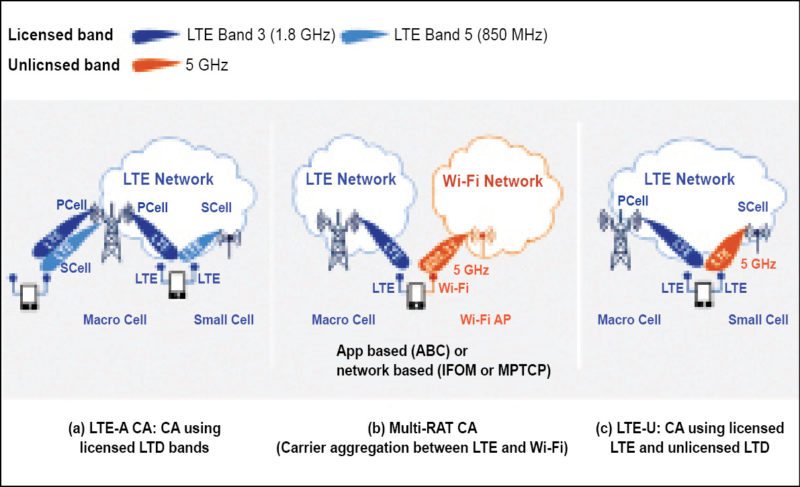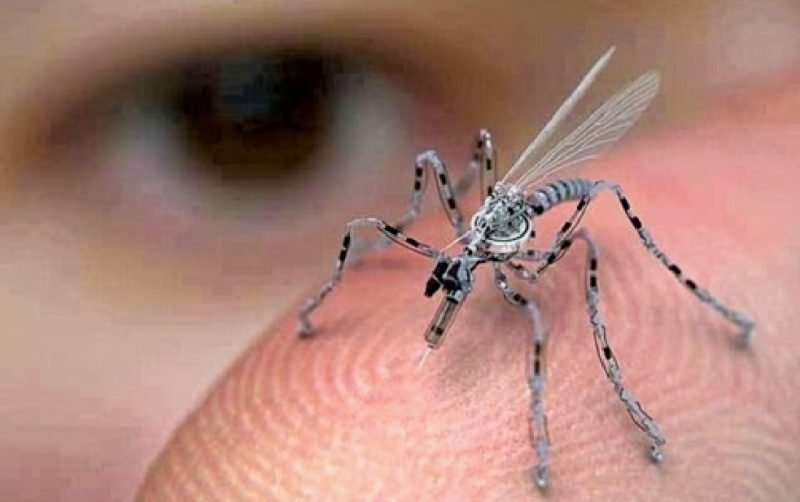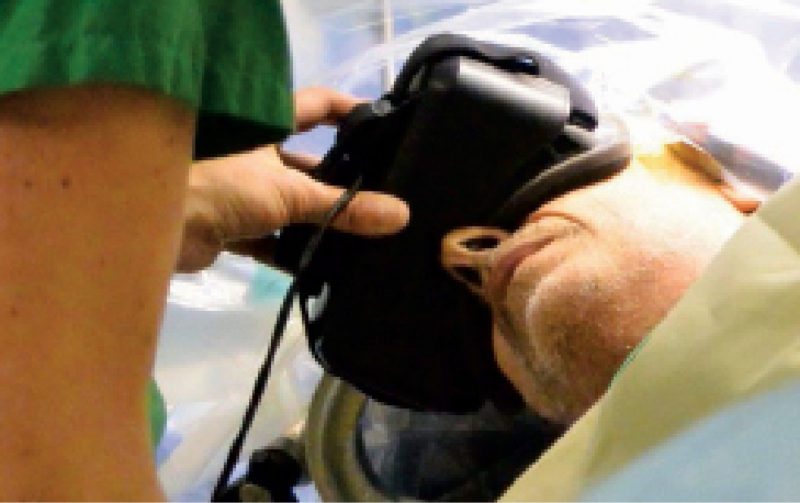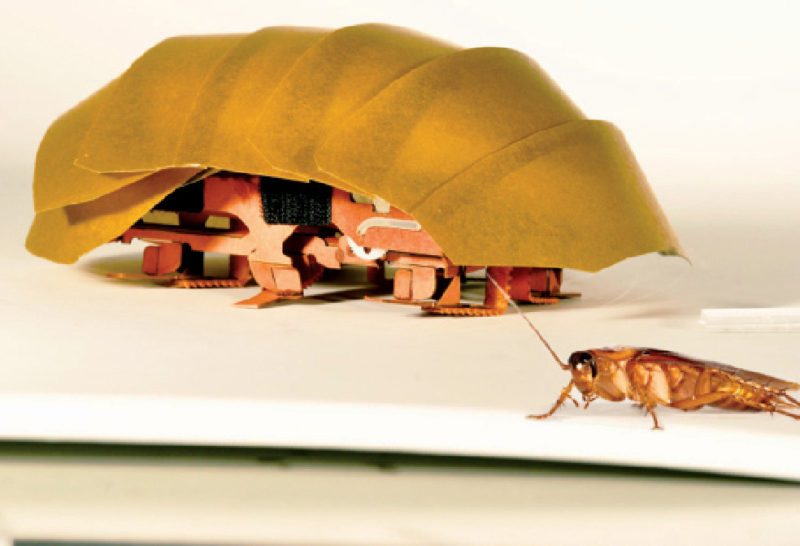Will LTE-U destroy Wi-Fi?

There seems to be a battle going on between the proponents of Wi-Fi and those keen to introduce a new technology—LTE in Unlicensed Spectrum (LTE-U). Besides the expensive spectrum that companies like Airtel, Reliance and Vodafone bid for, there are unlicensed airwaves that are traditionally used for cordless phones, remote controls and monitors, etc. Wi-Fi also makes use of this free spectrum. But companies like Verizon and Qualcomm are getting ready to exploit this unlicensed spectrum for what they claim would be a better mobile broadband experience.
The proposal for LTE-U was originally given by Qualcomm for using 4G LTE radio communications technology in unlicensed spectrum such as 5GHz band, which is used by dual-band Wi-Fi equipment. Verizon is pushing to make it popular by equipping phones with chips that can make better use of LTE-U.
LTE-U will not replace LTE; instead it will improve LTE’s speed and coverage in areas having heavy congestion. It is a small-cell technology unlike LTE that is broadcast from large towers. What’s good is that, the devices currently making use of Wi-Fi will be able to run on LTE-U as well. But the performance of Wi-Fi can suffer, in case of bad network architecture, in the presence of LTE-U. However, there is a possibility that Wi-Fi and LTE-U may co-exist after proper mechanisms have been arrived at.
Based on 3GPP Rel. 12, LTE-U targets early mobile operators’ deployments in the USA, South Korea and India, with co-existence tests defined by LTE-U Forum. Likewise, defined in 3GPP Rel. 13, Licensed Assisted Access (LAA) targets deployments in Europe, Japan and some other countries. LTE-Wi-Fi Link Aggregation (LWA) will be used for deployments where the carriers already have Wi-Fi in use.
A microdrone, the spying tool of the future

A team of researchers at Johns Hopkins University, USA, in conjunction with US Air Force Office of Scientific Research at Wright-Patterson Air Force Base in Arlington, Virginia, is helping develop what they are calling a micro aerial vehicle (MAV) that will undertake various espionage tasks.
The robotic insect can effortlessly infiltrate urban areas, where dense concentrations of buildings and people, along with unpredictable winds and other obstacles make it impractical. It can also land precisely on human skin, use its super-micron size needle to take DNA samples and fly off again at speed. All people feel is the pain of a mosquito bite without the burning sensation and the swelling.
The device can inject a micro radio frequency identification (RFID) tracking device right under the skin and can be used to inject toxins into enemies during wars. The device can be controlled from a great distance and is equipped with a camera and built-in microphone.
Smartphone that can bend for controlling apps
Researchers at Queen’s University’s Human Media Lab have developed the world’s first full-colour, high-resolution, wireless flexible smartphone that combines multi-touch with bend input. They have named the phone ReFlex, and it allows users to experience physical tactile feedback when interacting with their apps through bend gestures.
According to Roel Vertegaal (School of Computing), director of Human Media Lab, when this smartphone is bent down on the right, pages flip through the fingers from right to left, just like these would in a book. More extreme bends speed up the page flips. Users can feel the sensation of the page moving through their fingertips as the phone vibrates. This allows eyes-free navigation, making it easier for them to keep track of where they are in a document.
Vertegaal gave another example where when users play Angry Birds game with ReFlex, they bend the screen to stretch the sling shot. As the rubber band expands, they experience vibrations that simulate those of a real stretching rubber band.

RFID chip that cannot be hacked
A research team at Massachusetts Institute of Technology (MIT) has developed an RFID chip that it claims is virtually impossible to hack. To combat the issue of security, researchers came up with a two-point solution; an on-chip power supply whose connection to the chip circuitry would be nearly impossible to cut and a set of non-volatile memory cells that can store whatever data the chip is working on in case a power failure begins to take place.
To make this high-end chip, exclusive ferroelectric crystals were used. As a crystal, ferroelectric material contains a 3D lattice of molecules, where equal and opposite charges produce electrical polarisation due to a separation between these, replicating the dynamics of a capacitor. When an electric field is applied, cells’ polarisation can be aligned in two ways depending on the direction of the field. This represents the two possible values of a bit of information that the chip stores.
VR headset maps brain during surgery
Virtual reality (VR) is becoming quite useful when it comes to the medical field. At Angers University Hospital, France, physicians used a VR headset to map a patient’s brain during surgery to remove a tumour. The patient was conscious during the procedure in which doctors used a virtual environment to map zones of the brain. Until now, said mapping and monitoring neural connections in certain areas were not easily achieved in the operating room.
Neurosurgeon Philippe Menei explained, “By totally controlling what the patient sees and hears, we can put him in situations that allow us to do tests on certain connections that were not possible before.”

Neural chip performs AI tasks
Researchers from Massachusetts Institute of Technology (MIT), USA, have developed a new energy-efficient neural chip that can run powerful artificial intelligence (AI) algorithms locally, without depending on the Internet for heavy data processing. The chip is called Eyeriss and is ten times as efficient as a mobile GPU, and can possibly increase the task-handling capability of mobile devices.
A neural network is a vast virtual network of information processors, modelled to emulate the processing technique of the human brain. It is used to execute powerful computational processes and to run algorithms that are too heavy for a single low-power device to handle.
Eyeriss has 168 cores, and each of these has its own memory unlike a single, shared memory bank found in other GPUs. Hence, the cores would not have to transmit data back and forth the memory bank, thus saving time and energy. This also facilitates communication between individual cores without the need for it to be routed through the main memory.
Cockroach-like robot could save people during earthquakes
Scientists at University of California, Berkeley, USA, have drawn robotic inspiration in a cockroach’s ability to squish through the tiniest of cracks and still move at tremendous pace even under compressed state.
The flexibility of cockroaches allows them to travel at 4.8kmph. Using a high-speed camera, scientists observed that the insects could manage themselves into a space less than a quarter of their height by minimising the size of their exoskeletons to nearly half, and this adjustment would take them just a second. They also observed that the exoskeleton collapse does not slow them down; it continues by means of body-friction legged crawling.
This gave them a hidden potential robot. They laid out an arrangement of plates, laminated in a way similar to the exoskeleton and wrapped it around a robot. They named it CRAM, or Compressible Robot with Articulated Mechanisms.

Polymer-coated contact lenses transform into next-gen electronics
Scientists from Future Industries Institute (FII) of University of South Australia have completed research on polymer film coating, which can conduct electricity on a contact lens and possibly integrate electrical circuits that are safe for human wear. This breakthrough could provide one of the safest methods of bringing people and their smartdevices closer together, according to FII associate professor, Drew Evans.
The conductive polymer used in the study is poly (3,4-ethylenedioxythiophene) (PEDOT) deposited from vapour phase onto hydrated hydrogel substrates, which were further plasma-treated for providing better adhesive property.
Researchers also seek to produce medical benefits through biocompatible conducting polymers at nano-scale and grow these directly on a contact lens.
Bee pollen boosts battery performance
According to a new research, bee pollen could play an important role in battery research. Scientists at Purdue University, USA, have been researching ways to make better batteries, and have recently discovered that pollen grains and their unique microstructures could be put to use as an efficient type of energy-storage unit.
The scientists were trying to improve on conventional lithium-ion batteries, which have an anode made of carbon (usually graphite) and a cathode made of lithium-cobalt-oxide. The electrolyte that runs through the battery is made of lithium salts.
They found that if they could turn pollen into a carbon anode with a more useful microstructure than graphite, they might be able to create a battery with the ability to store more energy. So they took pollen from honeybees and cattails, and turned these into little pieces of carbon. They superheated a section of bee pollen and a section of cattail pollen to 1112°F (600°C) in a space that was filled with argon gas, which stops carbon from burning up.
They then reheated the pollen based carbon pieces to create more empty pockets in the pollen structure, which increases their capacity to store energy.
Traffic lights that recognise, favour cyclists
Forty per cent of residents in Copenhagen commute by bikes and have access to a city-wide network of protected bike lanes and sleek infrastructure built just for them. The city aims to be carbon-neutral by the year 2025.
To achieve this goal, the city’s latest intelligent transport systems action plan calls for making riding a bike or taking the bus more appealing. Copenhagen wants to cut bus travel times by five per cent to 20 per cent and cycling travel times by ten per cent, among other measures. To do that, the city is installing 380 intelligent traffic signals that will spot and prioritise buses and bikes. This will ensure that traffic flows better, so people can save time in the greenest possible way.






